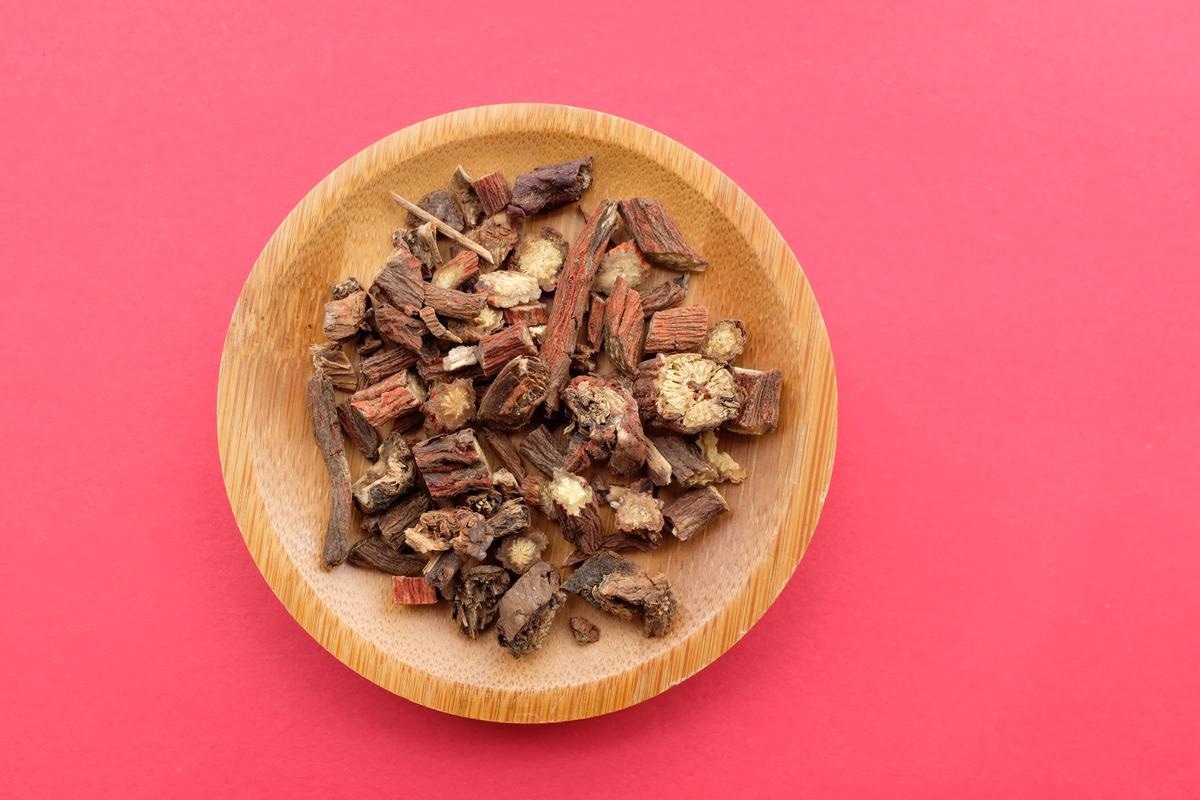Danshen is a herb used in traditional Chinese medicine against many different diseases, primarily for blood and heart vessel health. It is the dry extract of the organism Salvia miltiorrhiza, and early scientific investigation suggests solid evidence behind its use.

About the study
In a study published in Cells, researchers have been investigating the effects of this extract for use against coronavirus disease 2019 (COVID-19). They wanted to evaluate the effects of the extract on two levels. First, they aimed to investigate if the extract could reduce the ability of the S1 subunit of the spike protein to bind to angiotensin-converting enzyme 2 (ACE2) – the method by which the virus enters the cell. They also wanted to understand if the extract could affect the symptoms of the disease by ameliorating the proinflammatory phenotype infection that severe acute respiratory syndrome coronavirus 2 (SARS-CoV-2) induces.
Findings
Ultra-high performance liquid chromatography (UHPLC) was used to analyze the content of the active compounds in the S. Miltiorrhiza root powder extract, including salvianic acid, rosmarinic acid, salvianolic acid A, salvianolic acid B, ursolic acid, tanshinone I, tanshinone IIA, tanshinone IIB, tanshinone VI, dihydrotanshinone I, cryptotanshinone, and tetrahydrotanshinone. These made up 12.8% of the total dry matter of the extract. The most present compound was cryptotanshinone, at 77.59mg/g, followed by dihydrotanshinone I (15.35), and tanshinone IIA/IIB, at 10.8/10.22mg/g respectively. Tanshinone VI was present at 5.53mg/g and tetrahydrotanshinone at 3.61. All other compounds were present, albeit at much smaller concentrations.
The ability of the extract to inhibit the SARS-CoV-2-ACE2 interaction was then monitored at the single-molecule level using atomic force microscopy (AFM), The S1 subunit of the SARS-CoV-2 spike protein was grafted on the AFM tip, and the surfaces were coated with purified ACE2 receptors.
Single-molecule force spectroscopy (SMFS) experiments allowed force versus distance curves to be recorded. Specific unbinding events corresponding to the rupture of the S1-ACE2 bond occurred. The binding frequency was extracted and compared to the ratio between the number of force-distance curves showing this specific adhesion event. These experiments revealed a potent drop in binding probability in the presence of this extract at concentrations above 1ug/mL, reaching 50% inhibition at 100ug/mL.
To further explore this effect while accommodating more physiological conditions, the influence of the extract on the binding of inactivated virions was evaluated. This revealed even more impressive inhibitory potential, with the binding frequency reduced by 50% at 10ug/mL.
Following this, an in vitro system was established using R8d8 of peripheral blood monocytes (PBMCs) from healthy blood donors, leading to the release of proinflammatory cytokines to study the modulation of inflammatory responses. Once this was established, this system was used to assess the ability of the extract to regulate the response of PBMCs to activation of inflammatory factors TLR7/8.
After incubation with the extract for three hours, IL-1Beta, TNF, and IL-6 were significantly inhibited at concentrations between 5 and 10 ug/mL. No significant effect was observed on IL-8 or CXCL8 secretion. Still, the release of IFN-alpha was completely suppressed at 5ug/mL – showing a stronger inhibitory response than 1uM dexamethasone, the current reference treatment for COVID-19.
The NFkB pathway was the next target of the researchers' investigations, as it was thought that the mechanism by which the extract suppressed cytokine responses could be connected. Phosphorylation of NFkB p65 was observed at thirty minutes of incubation with R848, with no alteration in the acetylated form. Significant inhibition of p65 phosphorylation could be observed at 10ug/mL when the extract was included for thirty minutes preincubation.
The conclusion
The study reveals the compounds present within S. miltiorrhiza extract and the proportions in which they exist as a percentage of dry matter. It reveals that the extract has significant inhibitory potential when attempting to prevent the binding of the S1 subunit ACE2 receptors. The inhibitory potential appeared even more impressive when the experiment was repeated using inactivated virions.
As well as this, the authors successfully developed and applied a method to investigate any other effects against SARS-CoV-2 infection in vitro, revealing suppression of inflammatory factors through the NFkB pathway. These results indicate that S. miltiorrhiza extract can provide some use against the disease and support further study to isolate which compounds may be used to take to clinical trials.
- Petitjean, S. et al. (2022) "Salvia miltiorrhiza Bunge as a Potential Natural Compound against COVID-19", Cells, 11(8), p. 1311. doi: 10.3390/cells11081311. https://www.mdpi.com/2073-4409/11/8/1311
Posted in: Medical Science News | Medical Research News | Disease/Infection News
Tags: ACE2, Angiotensin, Angiotensin-Converting Enzyme 2, Atomic Force Microscopy, Blood, Cell, Chromatography, Compound, Coronavirus, Coronavirus Disease COVID-19, covid-19, Cytokine, Cytokines, Dexamethasone, Enzyme, Frequency, Heart, in vitro, Liquid Chromatography, Medicine, Microscopy, Molecule, Phenotype, Phosphorylation, Preclinical, Protein, Respiratory, SARS, SARS-CoV-2, Severe Acute Respiratory, Severe Acute Respiratory Syndrome, Spectroscopy, Spike Protein, Syndrome, Virus

Written by
Sam Hancock
Sam completed his MSci in Genetics at the University of Nottingham in 2019, fuelled initially by an interest in genetic ageing. As part of his degree, he also investigated the role of rnh genes in originless replication in archaea.
Source: Read Full Article
